Nature Lover Destinations in India, a land of diverse landscapes, is a haven for nature enthusiasts. From snow-capped mountains to golden beaches, lush forests to arid deserts, the country offers a breathtaking array of natural wonders. Each region boasts its unique charm, making India a paradise for those seeking pristine beauty and incredible biodiversity. Here’s a curated list of the top 10 nature lover destinations in India, perfect for experiencing the country’s natural splendor.
- 1. Valley of Flowers, Uttarakhand
- 2. Kaziranga National Park, Assam
- 3. Munnar, Kerala
- 4. Sundarbans Mangrove Forest, West Bengal
- 5. Great Rann of Kutch, Gujarat
- 6. Andaman and Nicobar Islands
- 7. Jim Corbett National Park, Uttarakhand
- 8. Ladakh, Jammu and Kashmir
- 9. Western Ghats, Maharashtra and Karnataka
- 10. Khajjiar, Himachal Pradesh
- FAQs
1. Valley of Flowers, Uttarakhand
- Best Time to Visit: July to September
- Why Go: A riot of colors and rare flora against a backdrop of snow-capped peaks
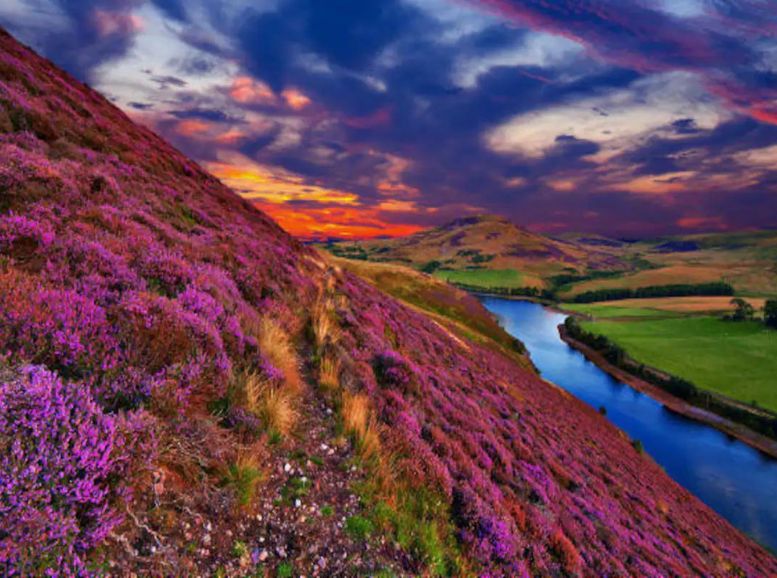
Nestled in the heart of the Garhwal Himalayas, the Valley of Flowers is a UNESCO World Heritage Site that comes alive during the monsoon season. This enchanting valley bursts into a kaleidoscope of colors, with hundreds of rare and endemic flowers adorning the landscape. From vibrant orchids and delicate poppies to majestic lilies and colorful daisies, the valley is a botanist’s dream.
Beyond its floral splendor, the valley is also home to diverse wildlife, including the elusive snow leopard and the majestic Himalayan bear. The moderate trek to the valley rewards you with breathtaking views of snow-capped peaks, gushing waterfalls, and serene meadows.
2. Kaziranga National Park, Assam
- Best Time to Visit: November to April
- Why Go: Encounter the majestic one-horned rhino and diverse wildlife
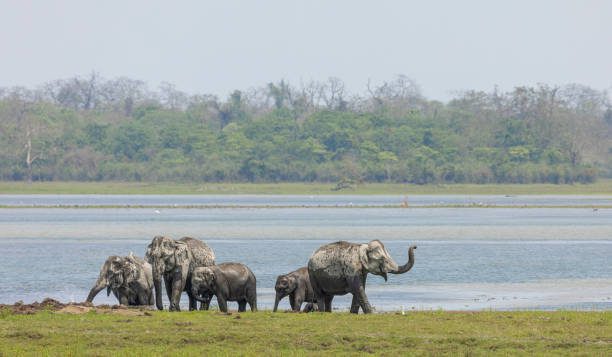
Kaziranga National Park, a UNESCO World Heritage Site, is a wildlife lover’s dream. Renowned for its significant population of one-horned rhinoceroses, the park boasts over two-thirds of the world’s total. This vast expanse of grasslands, forests, and wetlands, situated along the Brahmaputra River, is a haven for a diverse range of wildlife, including elephants, tigers, wild water buffalo, and a plethora of bird species.
Embark on a thrilling jeep or elephant safari to explore the park’s diverse habitats and encounter its magnificent wildlife. Whether you’re an avid wildlife enthusiast or simply seeking a peaceful retreat in nature, Kaziranga National Park offers an unforgettable experience.
3. Munnar, Kerala
- Best Time to Visit: September to March
- Why Go: Lush tea plantations, cool climate, and stunning natural beauty
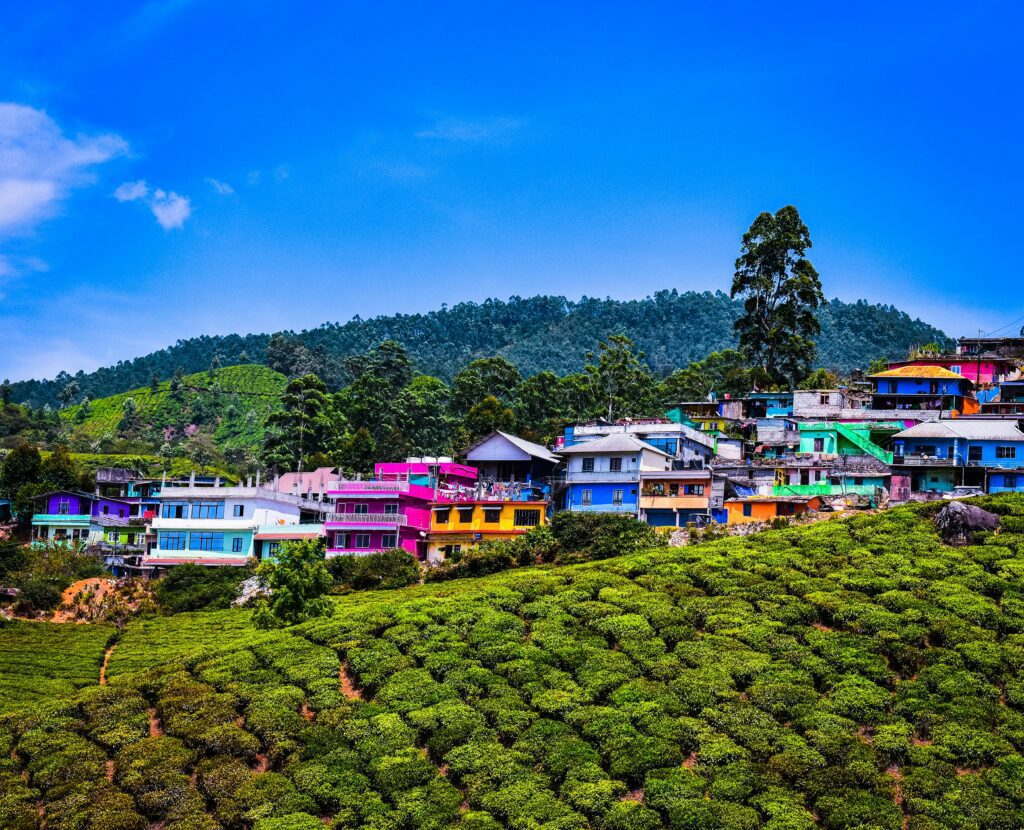
Munnar, a picturesque hill station nestled in the Western Ghats, offers a serene escape from the hustle and bustle of city life. The region is renowned for its sprawling tea plantations, which carpet the hills in shades of green. One of the most spectacular sights is the Neelakurinji flower, which blooms once every twelve years, transforming the hills into a breathtaking blue canvas.
Munnar is also home to Eravikulam National Park, where visitors can spot the endangered Nilgiri tahr. The winding roads, scenic viewpoints, and refreshing climate make Munnar a perfect destination for nature lovers, trekkers, and those seeking tranquility.
4. Sundarbans Mangrove Forest, West Bengal
- Best Time to Visit: November to February
- Why Go: Explore the world’s largest mangrove forest and encounter the majestic Royal Bengal tiger
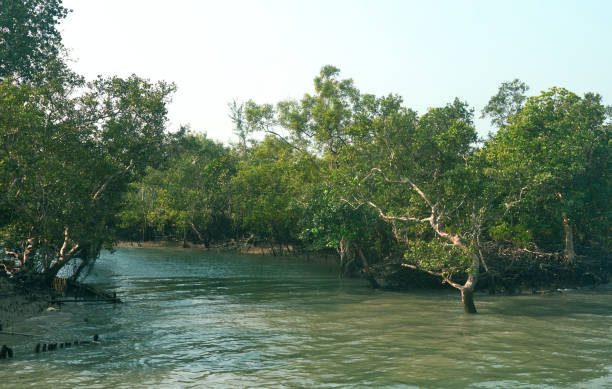
The Sundarbans, a UNESCO World Heritage Site, is a vast expanse of mangrove forests that stretches across India and Bangladesh. This unique ecosystem is home to a diverse range of wildlife, including the elusive Royal Bengal tiger. A boat safari through the intricate network of waterways offers an unforgettable experience, allowing you to witness the beauty and complexity of this mangrove forest.
From spotting crocodiles sunbathing on riverbanks to encountering playful dolphins, the Sundarbans offers a thrilling adventure for nature enthusiasts. The best time to visit is between November and February, when the weather is pleasant and wildlife sightings are more frequent.
5. Great Rann of Kutch, Gujarat
- Best Time to Visit: October to February
- Why Go: Experience the surreal salt desert, vibrant culture, and stunning landscapes

The Great Rann of Kutch, a vast salt desert in Gujarat, is a truly unique and awe-inspiring natural wonder. During the winter months, the desert transforms into a glistening white expanse, creating a surreal and ethereal landscape.
The Rann Utsav, a vibrant cultural festival, brings the desert to life with traditional music, dance, crafts, and camel safaris. Visitors can stay in tented camps, immersing themselves in the desert’s tranquility and witnessing breathtaking sunsets and starry nights. The Great Rann of Kutch offers a one-of-a-kind experience for those seeking adventure, culture, and natural beauty.
6. Andaman and Nicobar Islands
- Best Time to Visit: October to May
- Why Go: Pristine beaches, vibrant marine life, and lush rainforests
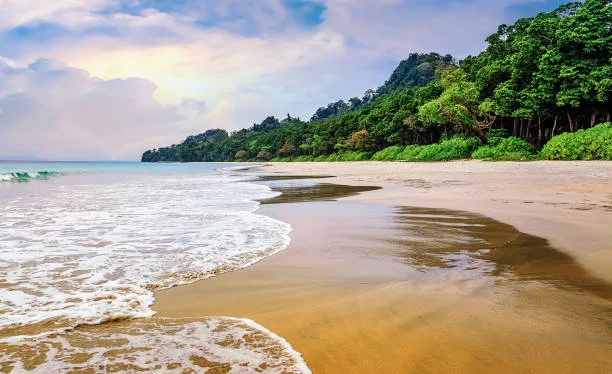
The Andaman and Nicobar Islands, a tropical archipelago in the Bay of Bengal, offer a breathtaking blend of pristine beaches, lush rainforests, and vibrant marine life. The islands are renowned for their crystal-clear waters, teeming with colorful coral reefs and exotic marine creatures.
Whether you’re an adventure enthusiast seeking thrilling water sports or a nature lover looking for tranquility, the Andaman and Nicobar Islands have something for everyone. Snorkeling and scuba diving in the crystal-clear waters allow you to explore the underwater world and witness the mesmerizing beauty of coral reefs and marine life.
7. Jim Corbett National Park, Uttarakhand
- Best Time to Visit: November to June
- Why Go: Thrilling wildlife safaris and the chance to spot the majestic Bengal tiger
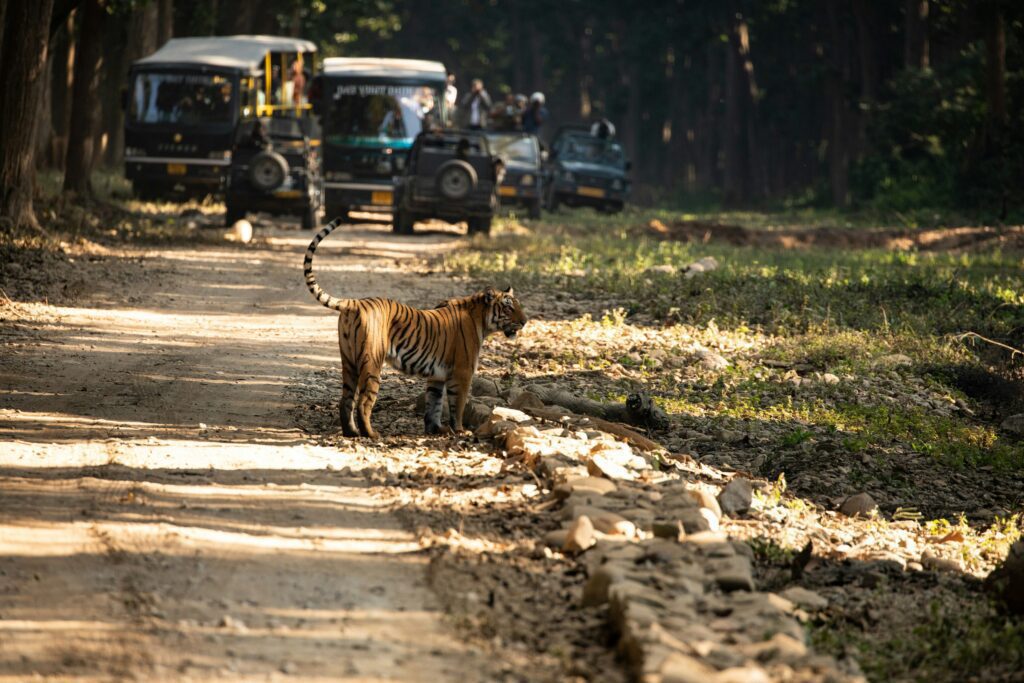
Jim Corbett National Park, India’s oldest national park, is a wildlife enthusiast’s dream. Renowned for its significant tiger population, this park offers a unique opportunity to witness these magnificent creatures in their natural habitat. The diverse landscape, encompassing dense forests, grasslands, and the serene Ramganga River, supports a rich array of wildlife, including elephants, leopards, and various bird species.
Embark on a thrilling jeep safari through the park’s scenic trails and experience the thrill of spotting these elusive creatures. The park’s serene atmosphere and lush greenery provide a perfect escape for nature lovers seeking a tranquil getaway.
8. Ladakh, Jammu and Kashmir
- Best Time to Visit: June to September
- Why Go: Breathtaking landscapes, serene monasteries, and cultural experiences
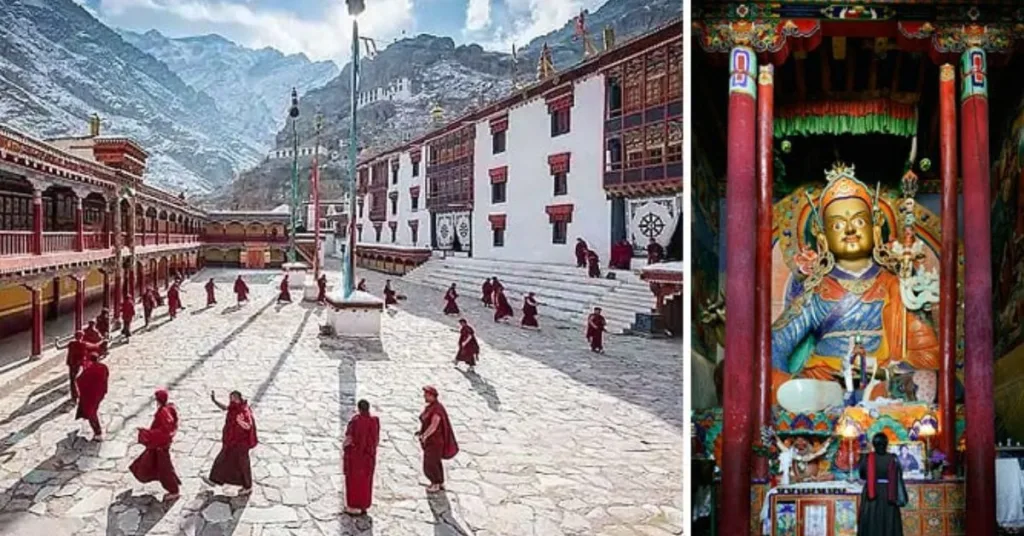
Ladakh, a high-altitude desert region in the Indian Himalayas, is a land of contrasts. Its rugged mountains, crystal-clear lakes, and ancient monasteries offer a unique and unforgettable experience.
The region’s most iconic attractions include Pangong Tso and Tso Moriri, high-altitude lakes that change color with the changing light. The serene monasteries of Hemis and Thiksey offer a glimpse into Ladakh’s rich Buddhist culture.
For adventure enthusiasts, Ladakh offers a plethora of activities, from trekking and camping to mountain biking and white-water rafting. Whether you’re seeking tranquility or adventure, Ladakh has something to offer everyone.
9. Western Ghats, Maharashtra and Karnataka
- Best Time to Visit: June to October for monsoon, November to February for mild weather
- Why Go: Lush greenery, cascading waterfalls, and diverse wildlife
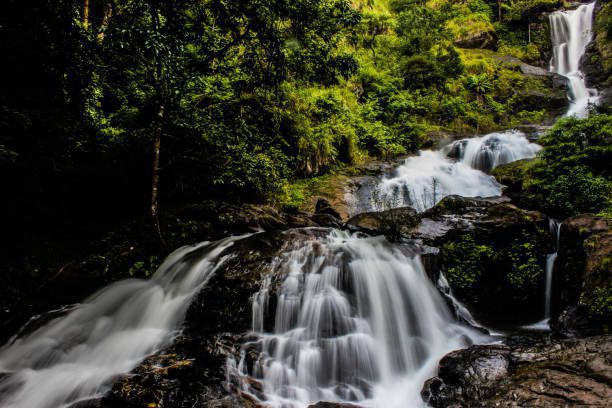
The Western Ghats, a UNESCO World Heritage Site, are a treasure trove of biodiversity. This mountain range, stretching along India’s western coast, is home to a vast array of flora and fauna, including many endemic species like the lion-tailed macaque and the Malabar giant squirrel.
During the monsoon season (June to October), the Ghats come alive with lush greenery, cascading waterfalls, and misty hills. The winter months (November to February) offer pleasant weather, perfect for trekking and exploring the region’s scenic beauty. Popular destinations like Matheran, Lonavala, and Coorg offer breathtaking views, tranquil retreats, and opportunities for adventure.
10. Khajjiar, Himachal Pradesh
- Best Time to Visit: March to June, September to November
- Why Go: Lush meadows, dense forests, and serene beauty
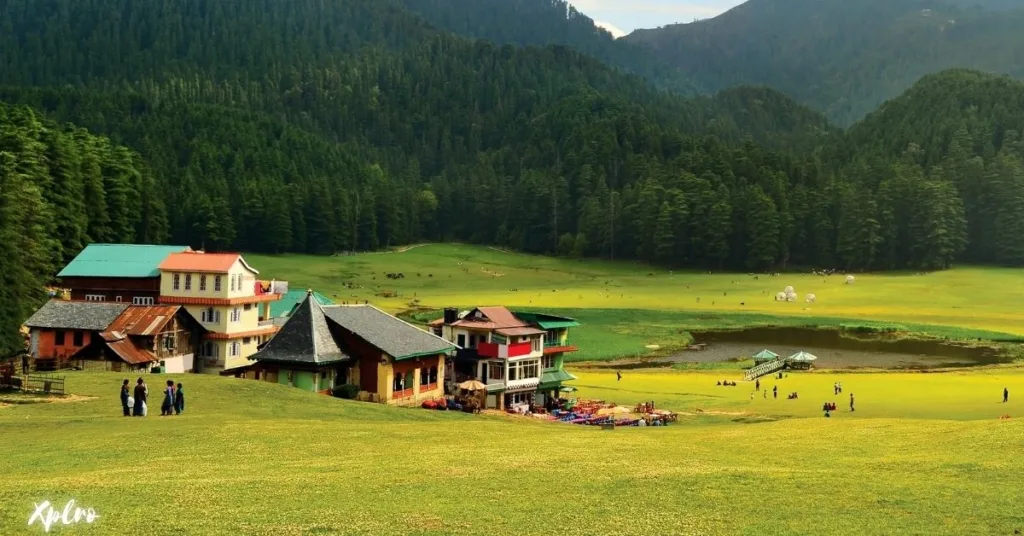
Khajjiar, often dubbed the “Mini Switzerland of India,” is a picturesque hill station nestled in the Chamba district of Himachal Pradesh. This idyllic retreat is characterized by its lush green meadows, dense pine forests, and a serene lake at its heart. The deodar forests and snow-capped mountains provide a stunning backdrop, making it a haven for nature lovers and those seeking tranquility.
Whether you’re looking to unwind with a leisurely walk, have a picnic amidst nature’s beauty, or capture stunning photographs, Khajjiar offers the perfect escape. The spring and autumn seasons are particularly enchanting, as the landscapes come alive with vibrant colors.
Conclusion – Nature Lover Destinations in India
As diverse as its culture, India’s natural beauty boasts a kaleidoscope of landscapes for every nature enthusiast. From the vibrant blooms blanketing the valleys of Uttarakhand to the stark white expanse of the Rann of Kutch, each region offers a unique charm. Explore the top 10 destinations curated by Xplro.com (your one-stop travel guide to India) to experience the essence of India’s wilderness. Whether you crave thrilling wildlife encounters, adventurous activities, or a serene escape, these havens promise unforgettable experiences. Immerse yourself in the splendor of nature, from the majestic Himalayas to pristine beaches, and discover the soul of India’s breathtaking landscapes.
FAQs
1. What is the best time of year to visit nature destinations in India?
- The best time to visit India’s nature destinations depends on the region’s climate and attractions. For instance, places like the Himalayas, such as Ladakh, are best visited from June to September for comfortable weather. In contrast, national parks across India are typically open from October to June, with winter providing the most pleasant climate for safaris. The Western Ghats and other hill stations in the south are ideal during the monsoon (June to October) for lush landscapes, though winter (November to February) is also enjoyable.
2. Do I need permits to visit certain nature reserves in India?
- Yes, permits are often needed for entry into protected areas and remote regions. For example, travelers visiting parts of Ladakh, like Nubra Valley, or the Andaman Islands might need Inner Line Permits. National parks such as Kaziranga and Corbett also require entry fees, and specific zones may need a safari permit. It’s best to check each destination’s requirements ahead of time for a hassle-free visit.
3. What kind of wildlife can I expect to see in India’s nature reserves?
- India’s wildlife is incredibly diverse, with animals ranging from tigers and elephants to one-horned rhinos and rare bird species. In Kaziranga National Park, visitors can see the famed one-horned rhinoceros, while Jim Corbett is known for Bengal tiger sightings. The Sundarbans is home to the elusive Royal Bengal tiger and saltwater crocodiles, while many reserves attract migratory birds during winter. India’s variety of ecosystems means a unique mix of animals in each park.
4. Are there eco-friendly accommodation options available at these destinations?
- Eco-friendly lodges and accommodations are increasingly common near nature destinations in India. Many resorts around national parks, like those in Corbett or Kaziranga, offer sustainable practices such as waste recycling, solar power, and organic food options. In regions like Kerala and the Andamans, eco-resorts aim to blend with the natural environment, using locally sourced materials and promoting low-impact tourism.
5. Is it safe to visit these nature destinations for solo travelers?
- Yes, India’s nature destinations are generally safe for solo travelers, particularly in popular tourist areas with established facilities. It’s wise for solo travelers to follow basic safety practices like avoiding isolated areas at night and staying informed about local guidelines. Group tours or hiring a local guide can also enhance both safety and experience, providing a richer understanding of the local ecology and culture.
6. Can I visit these nature destinations with children?
- Many of these destinations are family-friendly and can be enjoyed with children. Wildlife parks like Jim Corbett and Kaziranga offer kid-friendly safaris, while the serene hills of Munnar or Khajjiar are perfect for family picnics and nature walks. However, in more adventurous areas, such as Ladakh, the high altitude might be challenging for younger children. Always check age restrictions and safety guidelines before planning family excursions.
7. What should I pack when visiting these destinations?
- Packing essentials vary depending on the region and season. For a wildlife safari, neutral-colored clothing, a hat, sunscreen, and comfortable walking shoes are recommended. In mountainous areas like Ladakh, layers, a warm jacket, gloves, and sturdy hiking boots are ideal. For monsoon destinations like the Western Ghats, bring rain gear, and for remote places, consider eco-friendly toiletries and reusable water bottles to minimize environmental impact.
8. Do I need a guide to explore these destinations?
- While not always mandatory, hiring a guide often enhances the experience, especially in national parks and remote regions. Guides can offer valuable insights into the local flora and fauna, as well as cultural history. In places like Ladakh, a guide’s knowledge of safe routes is beneficial, while in national parks, they help with spotting and understanding wildlife. Many eco-tourism areas also provide local guides who know the terrain intimately.
9. Are there specific safety precautions to follow when visiting wildlife areas?
- Yes, safety is key when visiting wildlife areas. It’s essential to follow your guide’s instructions, keep noise levels low, and avoid wearing bright colors that may disturb animals. Stay seated in designated safari vehicles and keep a respectful distance from wildlife. Never attempt to feed or approach wild animals, as this can be dangerous and disrupt the ecosystem.
10. What activities can I enjoy at nature destinations in India?
- India’s nature spots offer a variety of outdoor activities. Wildlife safaris are popular in reserves like Kaziranga and Corbett, while trekking is a favorite in the Himalayas and Western Ghats. Beach activities, scuba diving, and snorkeling are available in the Andaman Islands, while bird-watching, stargazing, and photography are enjoyed across most natural destinations. Each area offers unique experiences to suit different interests.
11. Can I witness unique plant species in India’s nature destinations?
- Yes, India’s natural landscapes host some rare and fascinating plant species. For example, the Valley of Flowers in Uttarakhand blooms with rare Himalayan flora in summer. The Western Ghats are famous for endemic species like the Neelakurinji, which blooms once every 12 years. The Sundarbans’ mangrove ecosystem is home to unique salt-tolerant plant species. Each region has its own botanical wonders, making these areas a paradise for nature lovers and plant enthusiasts.
12. Are there festivals or events related to nature in these destinations?
- Many nature destinations in India have festivals celebrating both local culture and natural beauty. For instance, the Rann Utsav in Gujarat’s salt desert showcases regional crafts, music, and dance. Ladakh’s Hemis Festival, held at a scenic monastery, offers insight into Tibetan Buddhist traditions. Kerala’s Onam festival includes vibrant boat races in scenic backwaters, while several bird-watching festivals are hosted annually in states like Rajasthan and Karnataka during migratory bird seasons.






